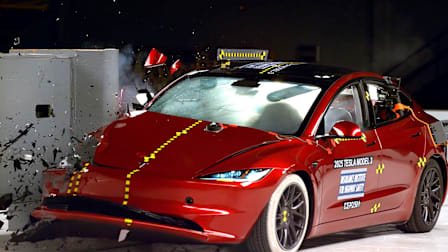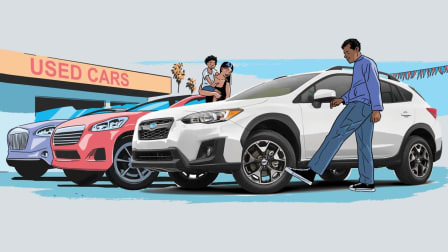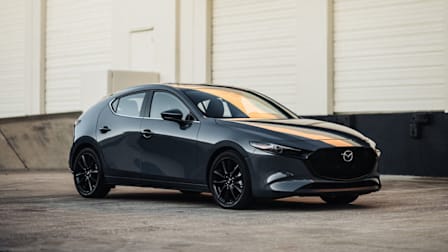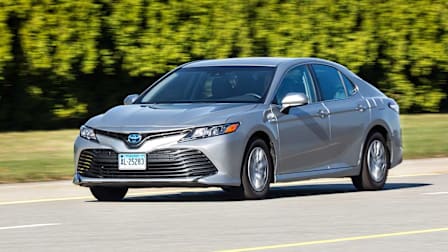FCC Plan Puts V2X Car Safety Technology at Risk
CR says that reallocating transportation safety airwaves for WiFi could cost lives

The chairman of the Federal Communications Commission announced this week that the agency plans to vote at its meeting next month on a proposal to take more than half of the radio spectrum currently reserved for vehicle-to-everything (V2X) auto safety communications and reassign those airwaves for WiFi and other unlicensed uses.
The latest version of this FCC plan also would favor cellular data technology for V2X communications over another technology currently in use that relies on short-wave radio, called DSRC. A change to the plan—to permit the use of only cellular technology—was unveiled just this week, and the FCC plans to vote November 18 on the new version of its proposal. While the agency had previously challenged safety experts, transportation officials, car companies, and others to justify the need to preserve spectrum for DSRC, these stakeholders’ arguments in public comments submitted to the FCC appear to have been disregarded by Pai.
CR and other safety experts say enacting the FCC’s plan would be a mistake and that the FCC has fallen far short of demonstrating how V2X safety applications could still be used securely and effectively on a smaller piece of the spectrum. They also say that restricting use of the transportation safety spectrum to just cellular technology would render current DSRC-based V2X systems effectively unusable.
The FCC's chairman, Ajit Pai, indicated in a blog post Tuesday afternoon that the FCC is likely to advance the plan on Nov. 18. He says that the increase in demand for WiFi during the COVID-19 pandemic has shown the need for more spectrum as people increasingly work from home and stream entertainment. There has been bipartisan support on the commission for splitting the spectrum band.
“In short, if adopted, these new rules for the 5.9 GHz band would deliver a win for American consumers and a win for automotive safety,” Pai said in his post, which announced agenda items for the FCC’s November meeting.
Safety Over the Airwaves
There’s little doubt that connected vehicle technology—which allows motor vehicles to communicate with smart infrastructure and each other to help prevent crashes—would save lives. But CR experts say the FCC changes would be a huge setback for a safety technology that's only at the beginning of its deployment. They consider V2X critical to preventing crashes and significantly reducing traffic deaths—which now number more than 36,000 per year on U.S. public roads—in part because the technology is expected to serve as a fundamental component of the self-driving cars of the future. CR has long advocated for the FCC to preserve the 5.9 GHz band for transportation safety purposes so that V2X technology can achieve its full lifesaving potential.

iStock-690704442 iStock-690704442
The Future of V2X
Matthew Hardy, program director for planning and performance management at the American Association of State Highway and Transportation Officials (AASHTO), says that the technological setback that would result from reallocating spectrum within the 5.9 GHz band raises a number of concerns. They include whether V2X systems on U.S. vehicles will be interoperable with those in Canada, Mexico, and other countries that are maintaining that part of the spectrum for V2X uses.
Hardy also says the reallocation will have an impact on the future of autonomous vehicles, because connected cars will need as much communication bandwidth as they can get to operate safely, beyond what their onboard cameras and sensors can provide without being able to communicate with other vehicles and with infrastructure.
“Without the benefit of connectivity, a systems approach—where vehicles can communicate with each other, the infrastructure, and with mobile devices of all types—may not be realized,” Hardy says. “The proliferation and rollout of driver-assist features and automated driving technology will continue, but without the safety benefits of connectivity.”
There’s also a funding issue at play. Technology like the DSRC devices that already keep buses and snowplows running on time in Salt Lake City (and being tested and used in other American cities) won't work on another part of the spectrum and would need to be replaced if V2X in the U.S. becomes a strictly cellular-based technology.
ITS America—an organization in a coalition that includes AASHTO, the Institute of Transportation Engineers, the Alliance for Automotive Innovation (the primary trade group representing auto manufacturers), and the National Safety Council, among others—says $2.7 billion has been invested in research and V2X technology so far. According to the Department of Transportation, replacing that technology with devices that work in a different part of the spectrum would cost taxpayers an additional $645 million.
In a report sent to the FCC in August, ITS America pointed out that a majority of commenters weighing in on the FCC’s proposal were against reallocating bandwidth currently set aside for transportation safety purposes. “Commenters who have suggested moving V2X technologies to alternative spectrum have done so without evidence that safety applications could function in that spectrum,” ITS says in its filing.
“If the FCC votes on this in November, it will almost certainly move forward with reducing available spectrum that is best used to improve traffic safety,” says CR’s Wallace. “That would be an enormous mistake that would dramatically set back lifesaving V2X technology.”




















